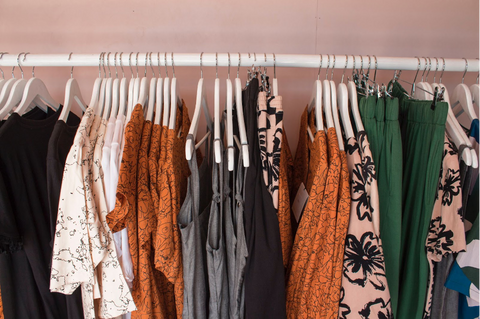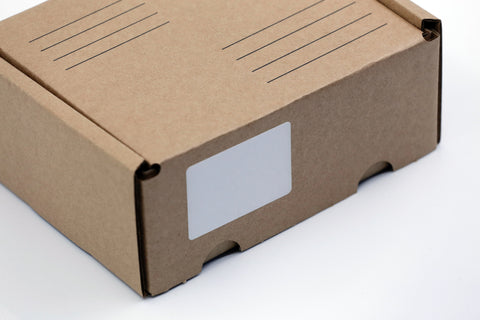The Most Eco-Friendly Fashion and Packaging Materials
Sustainable fashion and packaging are big topics for consumers and businesses alike, with many businesses, such as ours, making the decision to be as eco-friendly as possible in order to look after the environment and the world we live in.
According to a survey conducted by Deloitte, “32% of consumers are highly engaged with adopting a more sustainable lifestyle and 28% of consumers have stopped buying certain products due to ethical or environmental concerns. ”A new study by Doop Toothbrush has revealed the most popular sustainable materials being used in fashion and packaging at the moment and have spoken to experts in these fields to reveal why sustainability is such an important topic.
Bamboo is the most popular sustainable material used in fashion

“Fashion is ever-changing and reflects current attitudes and ideas. It was natural for the increasing awareness of our impact on the world – encouraged by David Attenborough and Greta Thunberg – to affect how we think about consuming clothing and accessories”, says Susannah Davda, from The Shoe Consultant.
A report conducted by McKinsey and Company suggests that the industry will “see more research into sustainable materials and technologies, as well as the circular economy. That’s great news for consumers and for companies that can make sustainability real. However, given the scale of investment required, it means nervous times for small and midsize players.”
Tencel was featured in eight out of the ten press articles analysed, with Pinatex coming in a close second place being featured six times. These are both newly emerging materials with Pinatex being a fibre created from the waste leaves of pineapple plants.
However, Sarah Jordan, CEO and Founder of You Underwear warns: “Fabrics made from trees are really interesting, like modal and viscose. However - they can be polluting and bad for the environment if not manufactured sustainably and ethically (thanks to all the chemicals and water needed). We need more certifications and information than just ‘100% viscose’” suggesting there is still lots of improvements and research to be made before fashion becomes fully sustainable.
These are the ways our experts say consumers can make their wardrobe more sustainable:
- Buy second hand
- Choose natural fabrics such as wool, silk and cashmere which decompose at end of life and don’t shed micro-plastic fibres when washed
- When necessary for performance, such as buying sportswear, shop for synthetic textiles made from recycled fibres.
- Select purchases based on long-term personal style rather than to fit a fashion trend.
- Wear what is already in your wardrobe or try and upcycle what you currently own.
- Swap clothes with friends or family who have similar tastes and can give clothes a new lease of life.
- If you are buying new clothes, look to small, sustainable businesses who are transparent and doing good in the world.
Recycled cardboard is the most popular sustainable packaging material

Maya Burnard, Research and Development Lead at Green n White, explains that “Packaging is one of the most visible single use, sometimes unnecessary use of plastic that consumers see”. New EU legislation states that by 2030 all plastic packaging must be recyclable, 55% of which is recycled effectively, they currently recycle 40% of plastic.
61% of UK consumers limit their use of single-use plastics as far as possible, with 43% saying they value sustainable packaging when it comes to buying products, according to Deloitte.
Recycled materials rank highly, with materials such as cardboard, plastics and paper already proven to be suitable for packaging. Following these trends, Doop Toothbrushes are made out of fully recyclable plastic and the packaging is biodegradable, created partly with plant-based materials.
Other materials that make the top 5 are biodegradable packing peanuts and mushroom packaging, both of which feature in half of the press articles analysed. One article explains the packaging is created by using: “cleaned agricultural waste which is fused with mushroom roots. As it uses waste in its production, it avoids the controversy that bio-based plastics face by being recyclable … it degrades very quickly – you can even compost it at home.”
The bottom three materials, starch-based biomaterial, plant-based biomaterial and algae-based agar were all featured in one press article but received no search volume. Despite being relatively unknown, starch-based biomaterial has “properties similar to those of plastic, cornstarch-based packaging derives from corn and is much eco-friendlier than plastic packaging”.
A report conducted by Trivium Packaging revealed that 73% of respondents are willing to pay more for eco-friendly packaging, with 20% of these willing to pay an extra 10% or more.
Despite the changes in mentality with many more customers now opting for sustainable packaging, Maya believes that the packaging industry will never be fully sustainable: “It is time consuming and difficult to sift through the information to try and figure out which packaging options are the least damaging to the environment.”
“Take reusable pouches for example, that can be sent back to the company creating a private closed loop; this relies on customers being 100% efficient at sending them back. Also, they need to be sent back using fuel. Then they need to be washed to a certain standard which requires plenty of water.”


